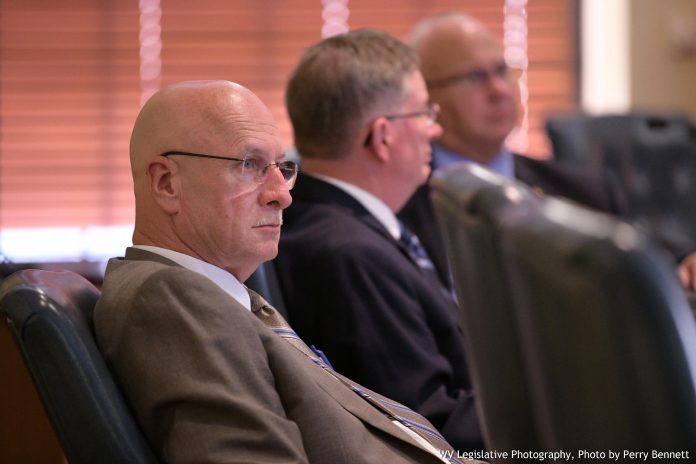The state Conservation Agency’s executive director asked legislators to keep the agency’s budget intact for the next fiscal year in order to maintain momentum on fixing and maintaining aging dams.
In Tuesday afternoon’s Joint Legislative Committee on Flooding, Brian Farkas, executive director for the West Virginia Conservation Agency, outlined issues with dams in West Virginia.
Farkas said there are 170 high-hazard small watershed dams, which he estimated provides close to $100 million in flood protection a year. About 60% of West Virginia residents are protected by dams.
More than half of these structures, he said, do not meet current design standards. He explained that when dams were built, they were under a certain hazard qualification. However, as more people and industry moved below these dams, that made the classification a higher hazard. To replace these dams would cost more than $1.7 billion.
Dams have structural issues as well. Farkas estimated close to 80% are 50 years or older. As these structures get older, they can develop seeps and slips, problems with the toe drains not functioning, problems with the trash racks not working efficiently, and outlook channels submerged under sediment or water.
Farkas said addressing seeps and slips on eight dams has an estimated engineering cost of $447,625. Fixing or repairing toe drains, which collect water moving through channels into a draining system, is estimated to cost $111,000. Farkas said 12 of these toe drains cannot be found and 10 need barriers to keep animals out.
Replacing and rebuilding 21 trash racks which collect debris, has an estimated cost of $436,000.
Outlook channels, which are concrete structures allowing water to pass through the structure, have an average cost of $5,000 per dam.
Costs for routine maintenance, including cutting grass or keeping trees from growing on the embankments, have been increasing every year. Farkas estimated for 2019, the cost is $965,000.
Farkas said no federal money is available for repairs. The National Resources Conservation Service provides money to rehabilitate dams. This could cost between $101 million and $500 million to rehabilitate 104 structures. There is a federal cost share of 65/35 so West Virginia would need to come up with $35 million to $175 million as a match, Farkas said.
The Legislature allocated an additional $3 million in the 2020 fiscal year to address dams. Farkas mentioned two in particular—the Upper Buffalo No. 4 and the South Fork dam – which both have contracts in place. Farkas asked legislators not to cut the agency’s budget.
“This kind of work is not one and done,” Farkas said. “It takes a couple of years to get the momentum going and to get contracts. … It may take a year or more but we need resources,” he said.
“They’re old and they’re getting older,” Farkas later said. “There is an opportunity to continue their existence and lifespan but we need to invest in them. I understand a lot of challenges face the Legislature daily. … What we’re asking is this is a public safety issue. This is important for flooding issues. Mitigating is just as important as anything else.”

